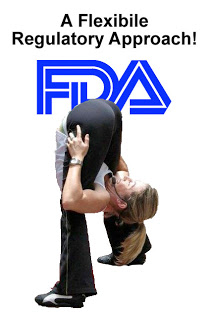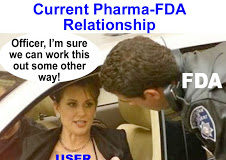In comments to the FDA, Johnson & Johnson (JNJ) stated “Flexibility in regulatory approach is crucial in the evolving digital world.” The comment was part of an 8-page document submitted to Docket No. FDA‐2009‐N‐0441 regarding Promotion of FDA‐Regulated Medical Products Using the Internet and Social Media Tools (find it here).
JNJ especially would like FDA to be as flexible as the FTC in regards to disclosure of important drug safety information within the context of space-limited digital applications.
“Technology,” says JNJ, “can help companies provide information about products in convenient and easily accessible ways, particularly for applications with limited space options. In such cases, links, rollover and scrolling functions can enable direct connections to safety and efficacy information about regulated products.”
JNJ cites FTC’s “reasonable man” as a model (see “Dot Com Disclosures: Information About Online Advertising (2000)”). From that source, JNJ offered this quote:
“Website are interactive and have a certain depth–with multiple pages linked together and pop-up screens, for example–that may affect how proximity [of required disclosures] is evaluated.” Therefore, “[a]dvertisers have the flexibility to be creative in designing their ads, so long as necessary disclosures are communicated effectively and the overall message conveyed to consumers is not misleading” given that “[i]n reviewing their online ads, advertisers should adopt the perspective of the reasonable man.”
Arnie Fried, former Pfizer Counsel, has already brought up the issue of “reasonable man” in context of FDA regulation of the Internet (see “Arnold Friede Blasts FDA’s Right to Define “Reasonable Man” Without External Input“).
What JNJ and Friede omitted to mention is this quote from the same FTC report: “On a Web page, the disclosure is more likely to be effective if consumers view the claim and disclosure together on the same screen. Even if a disclosure is not tied to a particular word or phrase, it is more likely that consumers will notice it if it is placed next to the information, product, or service to which it relates.”
And this:
“In reviewing their online ads, advertisers should adopt the perspective of a reasonable consumer. They also should assume that consumers don’t read an entire Web site, just as they don’t read every word on a printed page. In addition, it is important for advertisers to draw attention to the disclosure. Making the disclosure available somewhere in the ad so that consumers who are looking for the information might find it doesn’t meet the clear and conspicuous standard.
“Even though consumers have control over what and how much information they view on Web sites, they may not be looking for — or expecting to find — disclosures. Advertisers are responsible for ensuring that their messages are truthful and not deceptive. Accordingly, disclosures must be communicated effectively so that consumers are likely to notice and understand them.”
When it comes to this precedent, pharma can’t have its cake and eat it too. Somehow it doesn’t seem right to selectively quote the FTC only when the quote bolsters your case.
Admittedly, I have not studied the FTC document thoroughly, but I do note that it was written at least 10 years ago, long before space-limited social media emerged within the “evolving digital world.” It’s utility as a model in today’s world, therefore, is limited.
The FTC, however, did address one case where space is limited: banner ads.
“Disclose required information in the banner itself or clearly and conspicuously on the Web site it links to. In some cases, a required disclosure can be incorporated into a banner ad easily. Because of the space constraints of banner ads, other disclosures may be too detailed to be disclosed effectively in the banner. In some instances, these disclosures may be communicated effectively to consumers if they are made clearly and conspicuously on the Web site the banner links to and while consumers are deciding whether to buy a product or service. In determining whether the disclosure should be placed in the banner itself or on the Web site the banner links to, advertisers should consider how important the information is to prevent deception, how much information needs to be disclosed, the burden of disclosing it in the banner ad, how much information the consumer may absorb from the ad, and how effective the disclosure would be if it was made on the Web site.” [My emphasis.]
It seems to me that this would have been a better quote for JNJ to cite. Perhaps it’s because the drug industry has long ago figured out a way how to use rich media banner ads to supply all the necessary balance within the ad itself. That technology may not have been around in 2000.
Which leads me to think about how technology will evolve 10 years from now. Perhaps all this fretting about “space-limited” social media (eg, Twitter) will be as irrelevant as space-limited banner ads are today. Flexibility, therefore, is required from the FDA when it issues regulations regarding social media. However, that does not mean that it should not issue any guidelines at all. As the technology evolves FDA should also revise its guidelines to keep up (see “FDA Social Media Guidelines Best Done in Baby Steps“). Some day, even TV technology may evolve that would require new broadcast regulatory guidelines.









![6 Digital Tools at the Center of Healthcare Digitalization [INFOGRAPHIC]](http://ec2-54-175-84-28.compute-1.amazonaws.com/pharma-mkting.com/wp-content/uploads/2021/04/6DigitalTools_600px-100x70.jpg)




